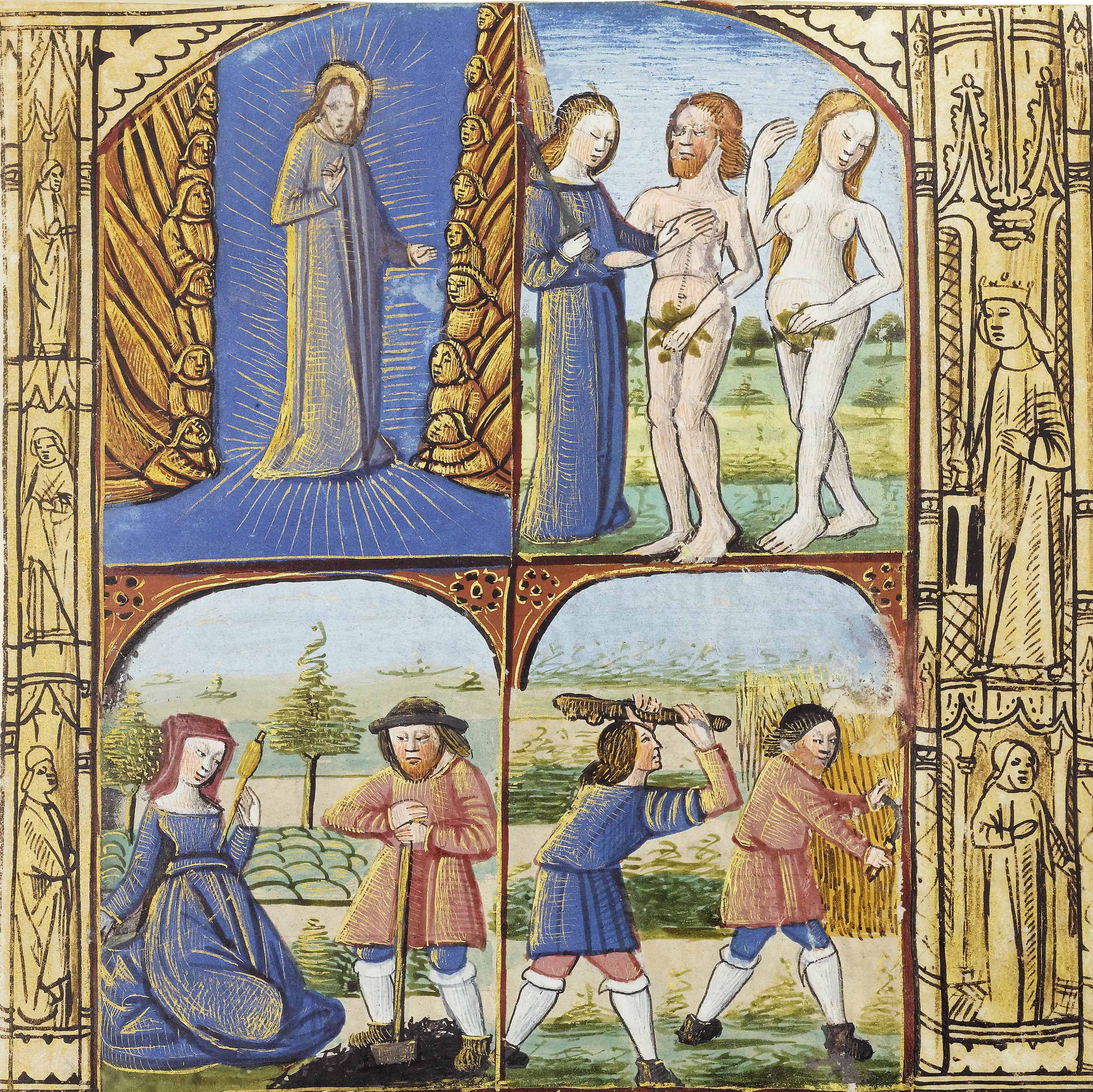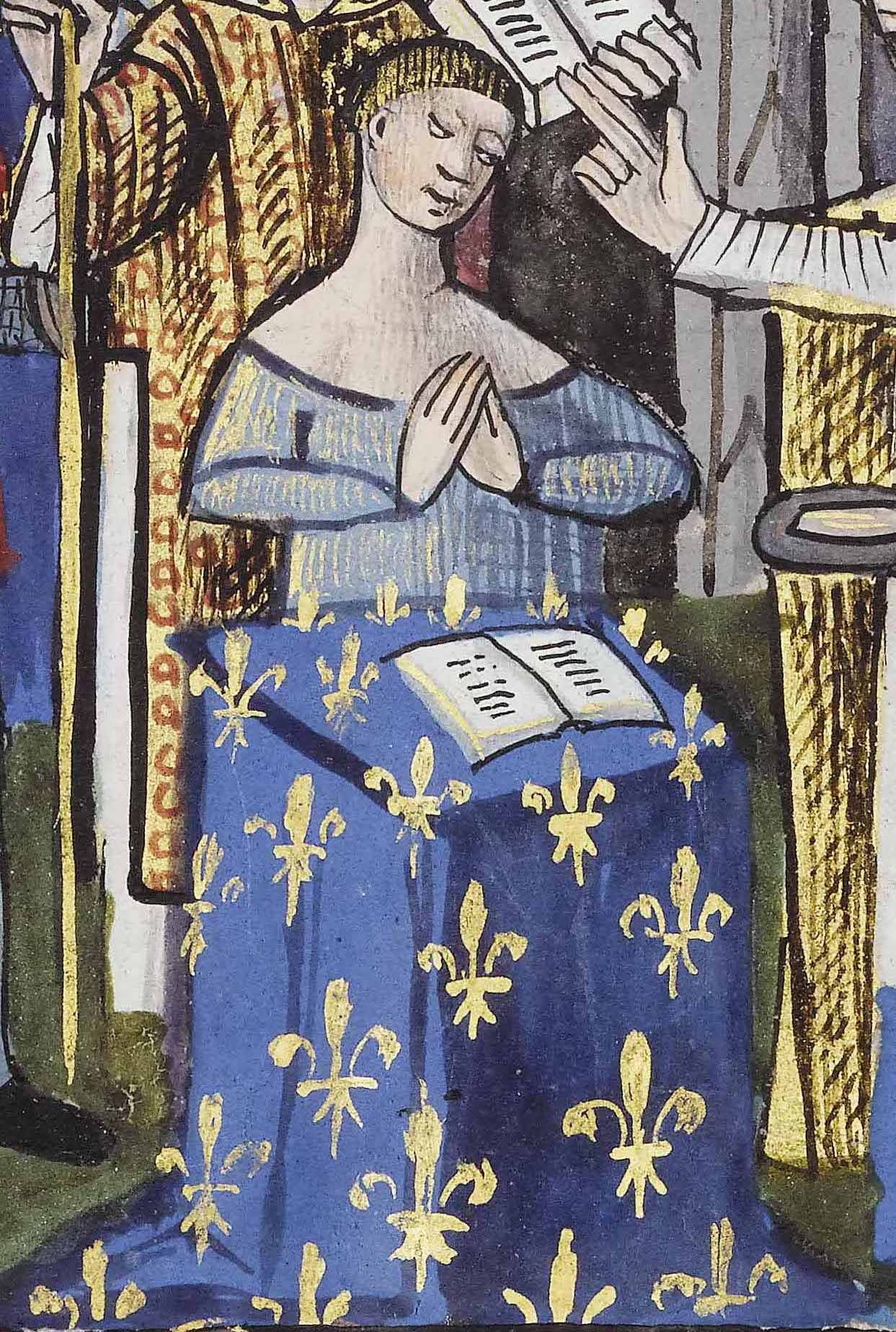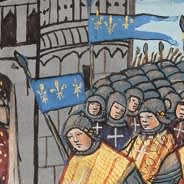
Medieval French "world" chronicles often recount history as a fairly direct line from biblical history, through ancient battles in Troy and Rome, to the foundation of Christian France, and up to the time in which the history was written. The text of the Chronique universelle (world chronicle) is often found in the form of genealogical scrolls, which literaly draw a line between biblical and ancient historical events and those of the French Middle Ages. A good example is Boston Public Libary, Rare Books, ms. 32, made in the 1470s.
Our charming manuscript Chronique universelle, written in French, was made in central France (Poitou / Berry?) c. 1480-1500, possibly for a sucessor to the Duke of Berry, Charles of Valois, or perhaps copied from a manuscript exemplar made for him.
This history manuscript represents the way in which the French perceived their position in history wonderfully. It begins its series of 26 illustrations with a four-part illumination showing: God in Heaven, Adam and Eve being sent from Paradise, Adam and Eve working, and Cain and Abel (f. 1).

After eleven biblically focused illuminations (including Noah's Ark and the Destruction of Jerusalem by Nebuchadnezzar) and two about the ancient world (Hector's body returned to Troy, Funeral of Cesar) the next twelve illustrations become focused on French history, visually emphasing the content that would be the most important to its French, noble patron. Such illuminations include the 508 AD Baptism of the first French, Christian king, Clovis (f. 84v),

Emperor Charles IV's and his son Wenceslas' entry into Paris in 1378 (f. 100v),

and the 1429 Annointment of Charles VII as King while Joan of Arc holds the crown (f. 112v, see above).
This manuscript's text may have been intended for a noble audience. It emphasizes the nobility of the French royal family by tracing its decent from the Trojans and Charlemagne, underlining its dynastic legitimacy. As a result, the iconographic program of the miniatures also accentuates the royal character of the text. For example the scene of Emperor Charles IV arriving in Paris shows the sovereign visiting his French neighbour surrounded by banners of the French fleur-de-lis. The number of French historical illuminations and the intentional use of the French coat of arms surely focuses the reader's attention on the "Frenchness" of this world chronicle!




